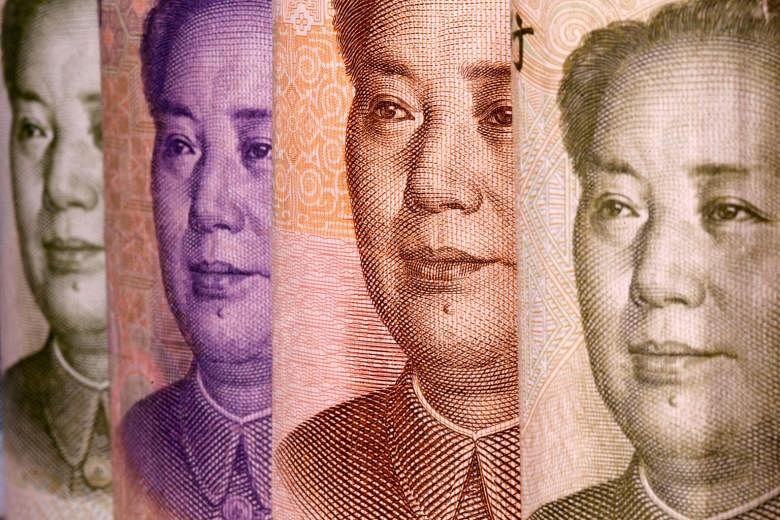The Chinese renminbi is drawing attention as a haven from volatility after its best quarter in 12 years. The onshore renminbi gained 3.8 per cent in the three-month period ending Sept 30, the most since early 2008, while its offshore counterpart advanced more than 4 per cent.
That was more than Group of Ten (G-10) currencies including traditional refuges like the Swiss franc and Japanese yen, a remarkable turnaround considering that the renminbi's devaluation just five years ago triggered a broad market rout.
China's success in fighting Covid-19 and its economic fallout has attracted praise and investment, and fuelled speculation that the renminbi could become a new sanctuary for the risk-averse.
The nation still tightly controls its exchange rate versus a basket of currencies, and determines how much money is able to cross its borders - a taboo for many international asset managers - but those measures have also stabilised the currency even as price swings pick up elsewhere.
The offshore renminbi has been "less volatile throughout this time period and the liquidity in the currency remains quite good relative to many currencies", said Jefferies global head of foreign exchange Brad Bechtel.
"China has done a lot of work on improving their capital markets and access to those markets and that is likely to continue, which will improve liquidity and attract capital flows."
Earlier this month, investors sent the offshore renminbi to its highest since May last year, with the currency rallying as much as 0.8 per cent, the most in almost three months. Overseas holdings of Chinese sovereign debt have meanwhile risen 22 per cent this year through August.
China is set to be the only major economy to grow this year.
Economists surveyed by Bloomberg expect the nation's gross domestic product to rise 2.1 per cent compared with a 4.4 per cent estimated drop in the United States, where disagreement around further stimulus, fears of a virus resurgence and election risk are damping expectations.
The renminbi now often trades as much per day as the franc or sterling, Mr Bechtel said.
Trading in the currency grew 41 per cent between 2016 and last year, with a snapshot of turnover taken by the Bank for International Settlements in April last year showing that an average US$285 billion (S$387 billion) a day changed hands, just behind volumes in the Swiss currency.
It is having a greater impact on the rest of the foreign exchange market, with correlation between the offshore renminbi and currencies including the pound and Australian dollar strengthening since the start of the pandemic, according to HSBC Holdings.
But barriers remain to the renminbi's wider use. While global reserves in the Chinese currency have grown to 2.1 per cent, up from 1.4 per cent two years ago, the dollar remains dominant; more than 60 per cent of holdings are still denominated in the US currency, according to the International Monetary Fund.
The renminbi also carries more risks than its G-10 counterparts. Not only does China's managed exchange rate make for policy surprises, investors must also stay savvy to global trade tensions.
"Recent Chinese output data has been reassuring, but this can be linked with state support and pent-up demand from abroad," said Rabobank head of foreign exchange strategy Jane Foley.
"Looking ahead, US-China tensions and trends towards on-shoring make us very cautious."
BLOOMBERG

